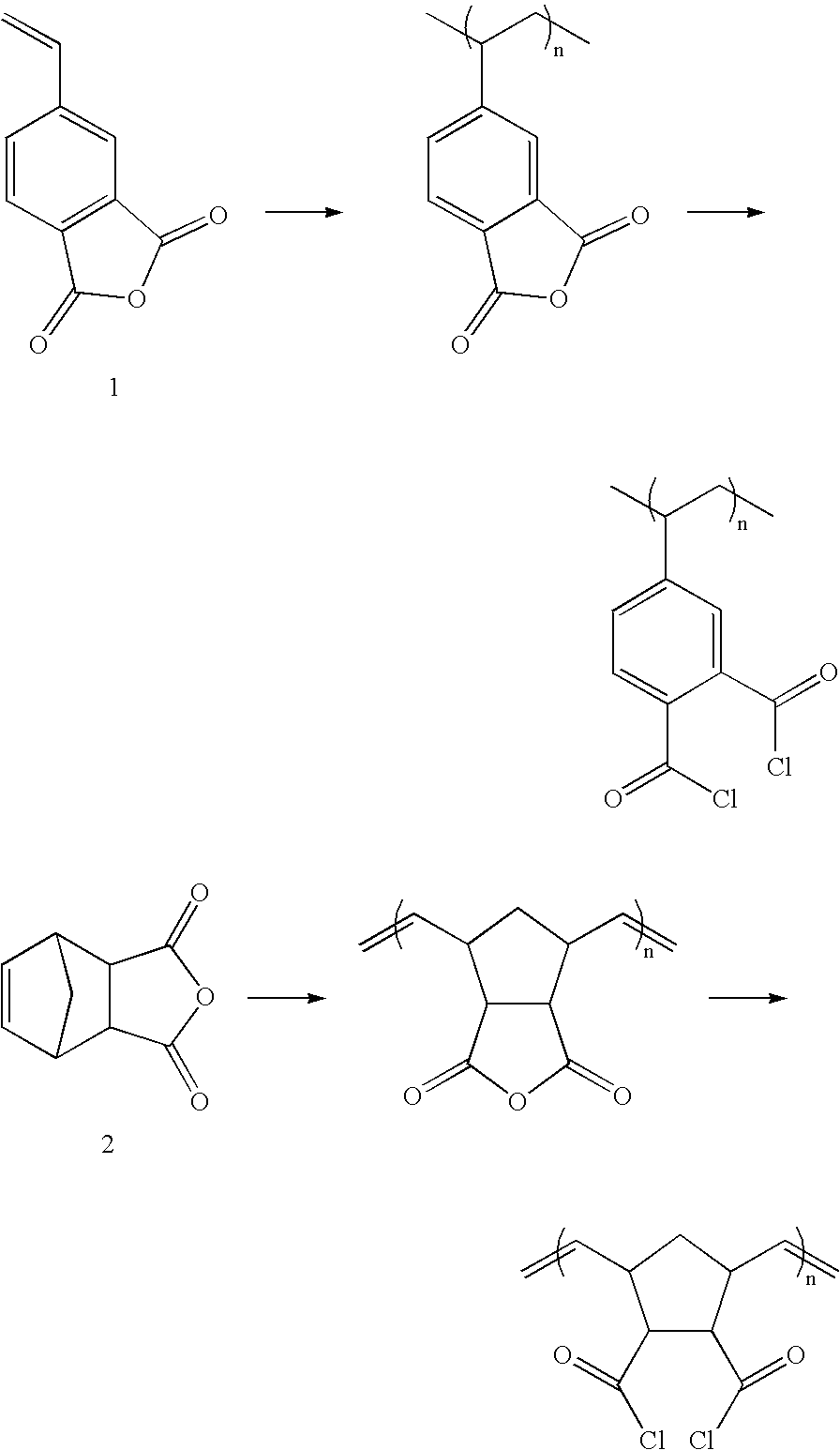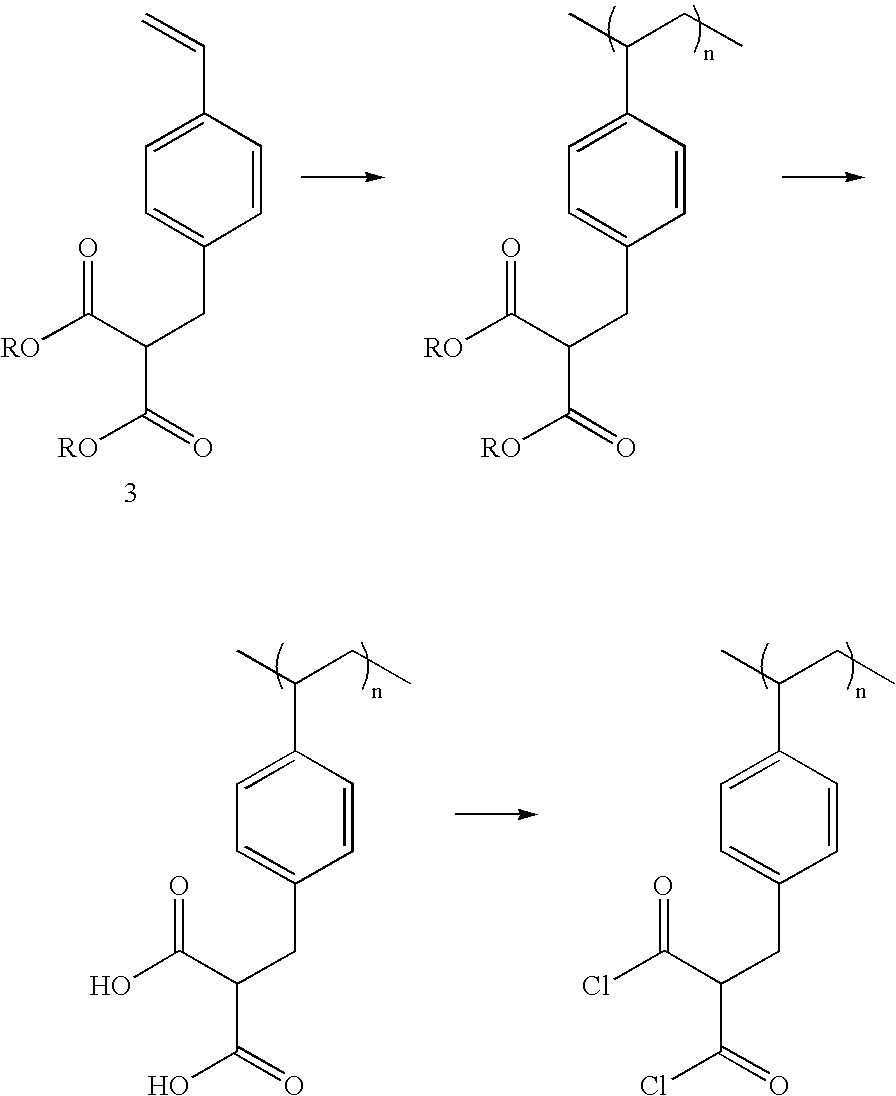Radiosynthesis of Acid Chlorides
a radiolabelled acid chloride and intermediate technology, applied in the field of radiosynthetic chemistry, can solve the problems of prior art methods and difficulties, and achieve the effect of less tim
- Summary
- Abstract
- Description
- Claims
- Application Information
AI Technical Summary
Benefits of technology
Problems solved by technology
Method used
Image
Examples
example 1
Preparation of Polystyrene-Supported Acyl Chloride
[0070] Polystyrene-supported carboxylic acid [Novabiochem Cat. No. 01-64-0111] is converted to polystyrene-supported acyl chloride by treatment with either oxalyl chloride or thionyl chloride by methods disclosed in the prior art [Leznoff et al 1977 Can. J. Chem. 55 p 3351-, Meyers et al 1995 Molecular Diversity 1 p 13]. FIG. 1 illustrates this reaction.
example 2
Radiosynthesis of An [11C]-Acid Chloride
[0071] A solution of [11C]-labelled carboxylic acid and Grignard reagent is passed through a column containing polystyrene-supported acyl chloride. An exchange reaction occurs between the excess polystyrene-supported acyl chloride and the no carrier added carboxylic acid to produce a solution of [11C]-labelled acid chloride. FIG. 1 illustrates this reaction.
example 3
Radiosynthesis of A [11C]-Amide
[0072] The solution of [11C]-labelled acid chloride produced in Example 2 is reacted with a secondary amine to obtain the respective [11C]-labelled amide product.
PUM
| Property | Measurement | Unit |
|---|---|---|
| radioactive | aaaaa | aaaaa |
| gamma-emitting radioactive | aaaaa | aaaaa |
| non-radioactive | aaaaa | aaaaa |
Abstract
Description
Claims
Application Information
 Login to View More
Login to View More - R&D
- Intellectual Property
- Life Sciences
- Materials
- Tech Scout
- Unparalleled Data Quality
- Higher Quality Content
- 60% Fewer Hallucinations
Browse by: Latest US Patents, China's latest patents, Technical Efficacy Thesaurus, Application Domain, Technology Topic, Popular Technical Reports.
© 2025 PatSnap. All rights reserved.Legal|Privacy policy|Modern Slavery Act Transparency Statement|Sitemap|About US| Contact US: help@patsnap.com



